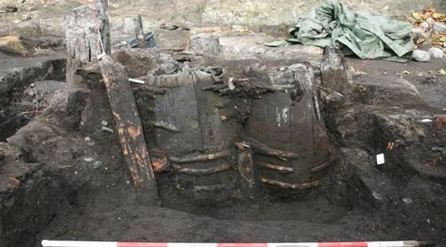It may not be the most glamorous of archaeological finds, but the discovery of 700-year-old stinking toilets has got experts excited.
这或许不是最有魅力的考古学发现,但能发现700岁高龄臭气熏天的厕所,还是让专家们非常兴奋。

Human excrement described as being in ‘excellent condition’ has been found at the 14th century site, which features a number of special purpose-built barrel latrines.
这处建于14世纪的厕所特色是有一些特定用途的桶状物,而在其中人们还发现处于“极佳状态”的人类排泄物。
Amazingly, the medieval faeces inside them still smell pungent, despite having had centuries to mellow.
这让人非常惊讶。这些厕所桶里来自中世纪的排泄物虽然历经了几百年的发酵,依然还是臭味强烈。
It is not yet known whether the two toilets were attached to a house or acted as a public lavatory.
目前还不清楚这两处厕所是房子室内使用的还是作为公共厕所使用的。
It is hoped that the excrement will give scientists a better idea of what people ate in Denmark at the time and it is now being analysed by experts.
这些排泄物有望帮助科学家分析当时丹麦人的饮食习惯,专家们已经着手对此进行分析。
The waste was found on an archaeological dig at Vilhelm Werners square in Odense on the island of Funen, according to The Copenhagen Post.
根据《哥本哈根邮报》的报道,这处厕所是在菲英岛的欧登塞市Vilhelm Werners广场的一处考古发掘现场发现的。
Excavation of the site is continuing and it is now the largest excavation in an urban area in Danish history. Odense is the country’s third largest city.
目前现场的考古挖掘还在继续,这是丹麦历史上对城市地区进行的最大规模的挖掘。欧登塞是丹麦的第三大城市。
People can visit the site and have a free tour of the excavations every Tuesday and Thursday, as well as popping into the archaeologist’ workshops.
每周三和周四人们可以免费参观考古挖掘现场,还可以参观考古学家的工作室。







